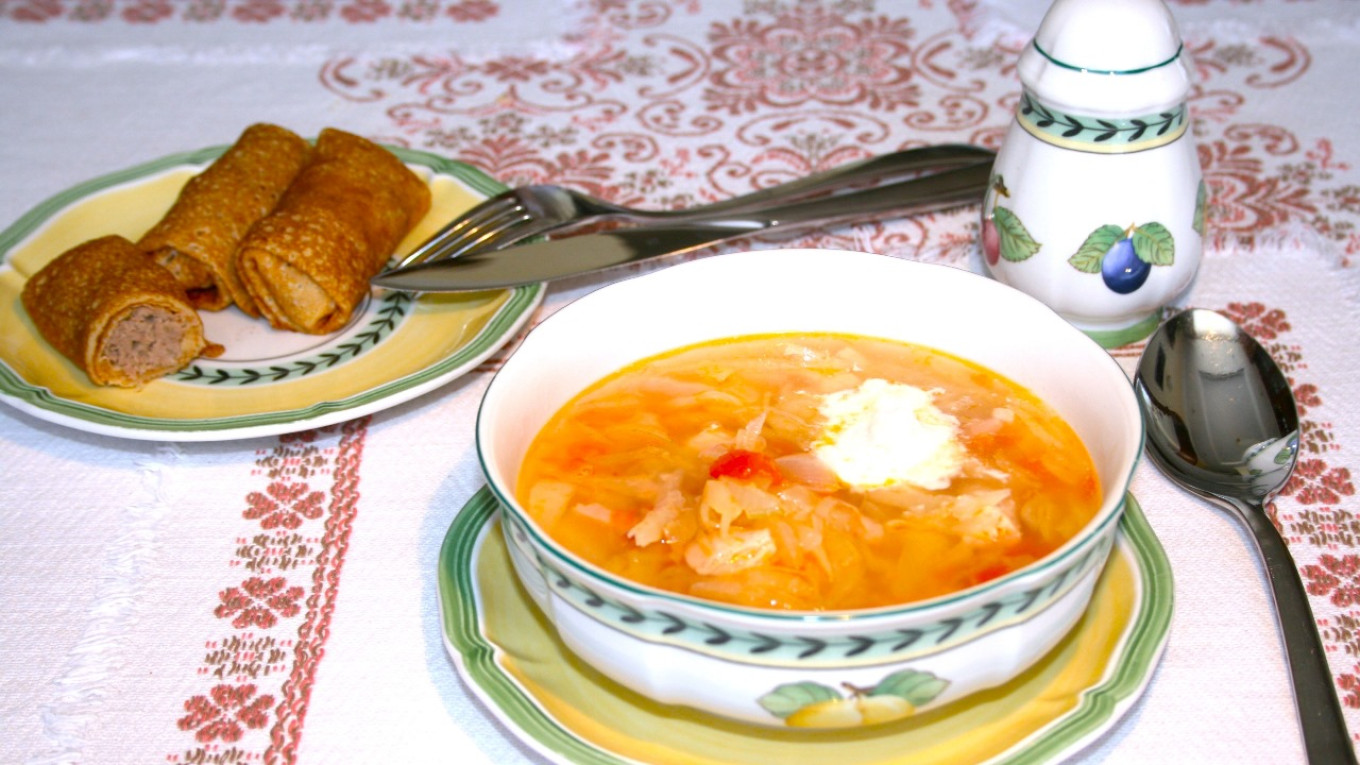A bowl full to the brim of a mouth-watering thick broth with vegetables, meat and a spoonful of sour cream. This is how many of us imagine a good start to any dinner. Soup in Russian cuisine is sacred. And what is the most famous and most common soup? It’s cabbage soup, which in Russian is just two letters: щи — shchi. Like every other dish we write about in the Russian culinary arts and history, we approach shchi like all the rest: just the facts, no exaggeration, no fantasy.
Although it’s the most common soup and the simplest to spell in Russian, there are so many myths it’s hard for non-specialists to separate fact from fiction. If you listen to domestic propagandists, shchi is the best thing mankind has ever invented in all of history. On the other side you’ll hear unflattering remarks about shchi. Some people say it's just the water used to wash out a pot after borscht.
Let's try to figure out what shchi is, when it appeared and how modern it is. Here are 10 questions and answers about cabbage soup.
1.When did shchi appear? No one knows. The idea of boiling cabbage in a broth must have appeared when cabbage itself appeared — that means in the 9th century when cabbage began to spread through the lands of East Slavic tribes.
2. Is shchi a native Russian dish? It’s very unlikely. Shchi appeared when no present-day Russians, Belarusians or Ukrainians existed yet. Historians can’t determine which ethnic group among Slavs are the descendants of the ancient Polians or Drevlians. Besides, the idea of boiling cabbage in broth obviously did not only occur to our ancestors. It is strange that today's Russian propaganda has not yet declared ancient Roman cabbage soup a Russian invention, and Emperor Diocletian, who boasted about the cabbage he grew — a native Russian.
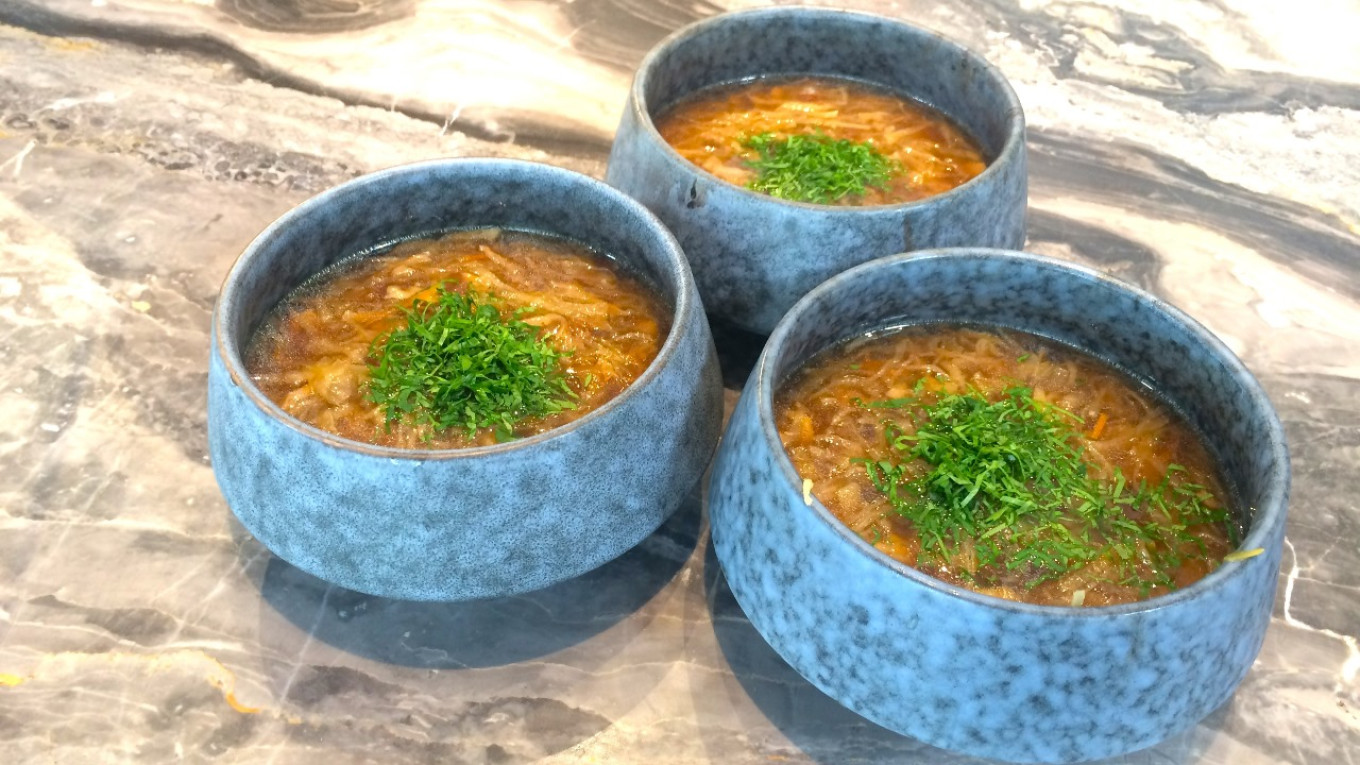
3. But at least the word "shchi" is Russian, isn't it? Even here there is no clear answer. It appears in the Russian language only in the 16th century as "shti." It is apparently derived from the Old Slavonic word съти and meant "a nutritious drink, liquid sustenance, chowder, broth, soup, seasoned with cabbage, sorrel and other greens." But there is also the ancient Indian word suta (juice of Soma plant) and ancient Irish suth (juice), which are close in sound. So it might have come from those ancient proto-languages.
4. Isn’t shchi a peasant dish? Partly. It appeared when there was no clear distinction between the diets of the rich and poor. The only difference was in the number of dishes and inclusion of meat, not in the quality of dishes served. Even "Domostroi" (1550s) recommends shchi for a very well-to-do family: "every day shchi and porridge with ham." Later, as there is more variety of food and dishes on wealthy tables, shchi gives way to other soups, but it remains part of Russian cuisine and has always been served.
5. But Russian shchi is unique, isn’t it? Yes, of course. It’s original in two ways. The first is the use of sauerkraut, which is, for the most part, traditional in Russian cuisine. Sometimes “krushevo” (the finely chopped outer leaves of cabbage) is fermented by adding rye flour. Shchi made this way gives the soup its “national” color — gray. The second Russian feature is cooking it in an oven so that the ingredients can slowly cook and soften all the way through. The outer cabbage leaves are very coarse and must be cooked in the oven for a long time to soften.
Below: When shchi was cooked in an oven, it was often covered with dough that was imbued with the flavor and scent of cabbage as it cooked.
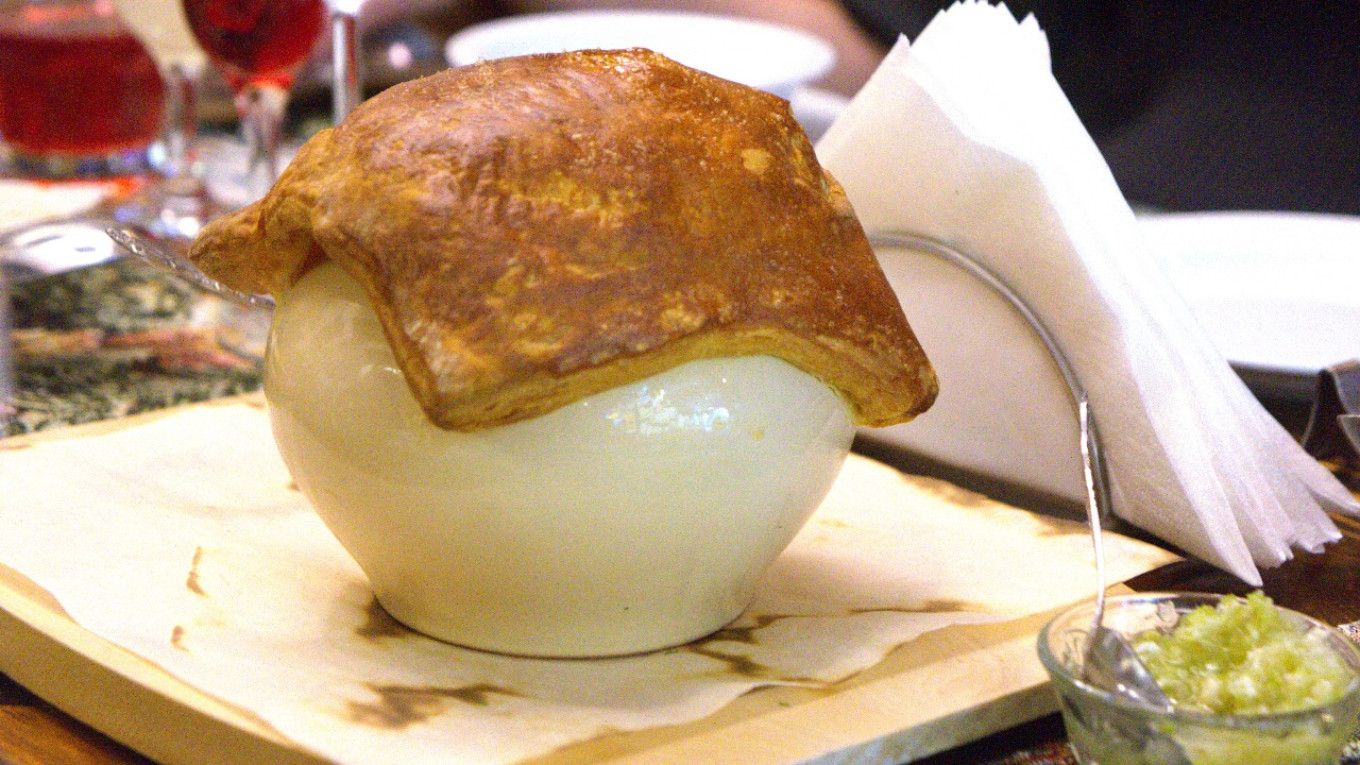
6. Is “sour shchi” cabbage soup made with sauerkraut? Not necessarily. Of course, in culinary literature, soup with sauerkraut is called sour shchi. But this term is mainly associated with a kvass-like drink that was very popular in Russia right up to the 20th century. In the 16th century, Domostroi advised combining “malt, flour and hops for sour shchi.” This was a drink almost like kvass but made with different types of malt. It was a highly carbonated drink that had to be stored in bottles with a cork held on by wires. It is considered invigorating and is drunk the “morning after the night before” to help someone recover after too much alcohol.
7. Shchi is a monotonous soup — doesn’t sauerkraut get boring? Not quite. In peasant cuisine, shchi is practically a daily meal. Of course, there was some variety, too. From the end of summer, shchi was made with fresh cabbage, from late fall, it was made with sauerkraut. In the spring, it was made with nettles, ground elder and other wild plants. More affluent kitchens served a greater variety of shchi. It was made with smelts, carp, duck, dumplings (called “little ears”) and in monasteries with cabbage stewed so long it was almost caramelized. And these are just a few variations.
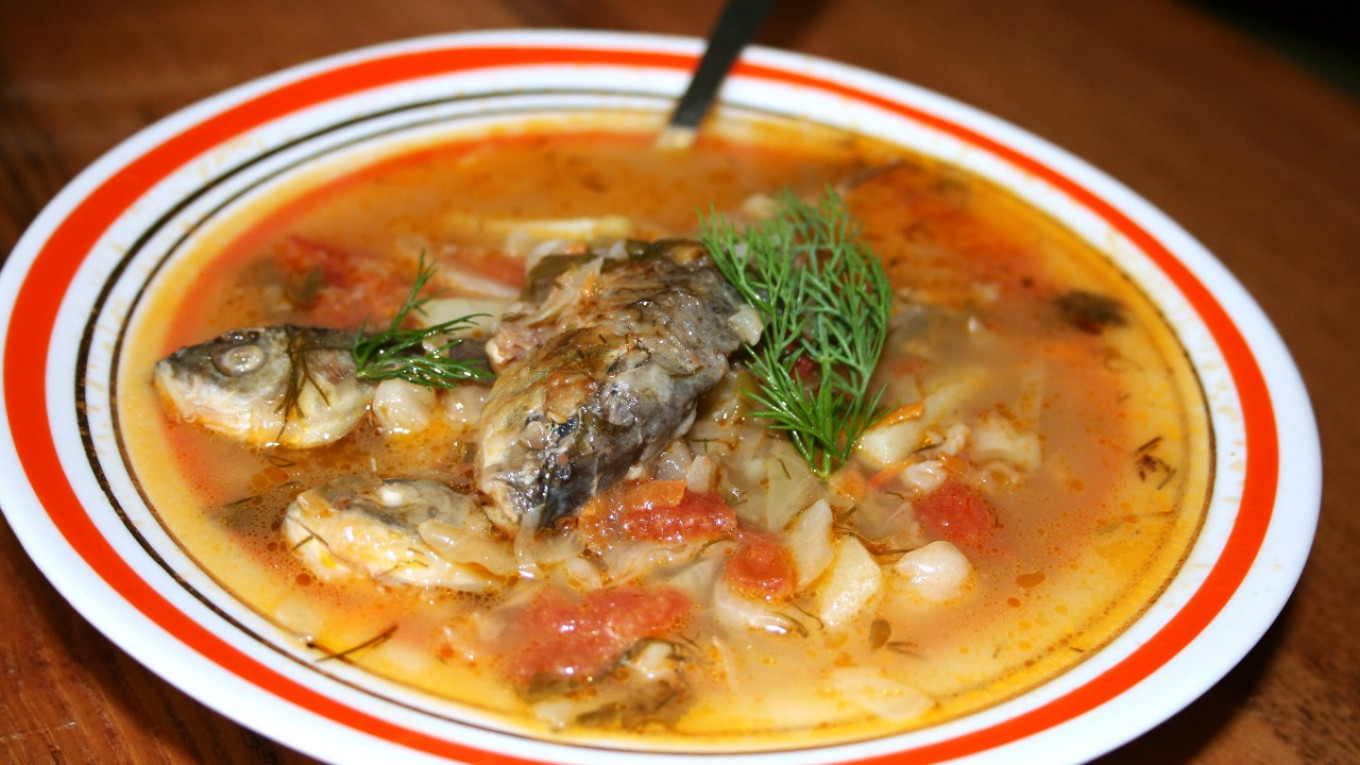
8. What happened to shchi in the Soviet period? In cafeterias and other eateries, shchi was gradually replaced by borscht. In the first edition of "The Book of Tasty and Healthy Food" (1939), there are two recipes for borscht and seven for shchi. Twenty years later, the situation is reversed. And the 1955 cookbook “Kulinaria” has 14 recipes for borscht and just nine for shchi, including a little-known recipe that includes sprats.
9. What’s the difference between the old and new recipes for shchi? "The Book of Tasty and Healthy Food" had this name for a reason. It’s because ideas about what tastes good and what is healthy have changed over the centuries. This concerns shchi, too. Thick shchi with a piece of salted pork fat and a thick layer of fat on the surface are now just a memory from the past. Since the middle of the 20th century urban home cooks don’t use “zaboltka” anymore (several tablesoons of rye flour added to the soup to make it more filling).
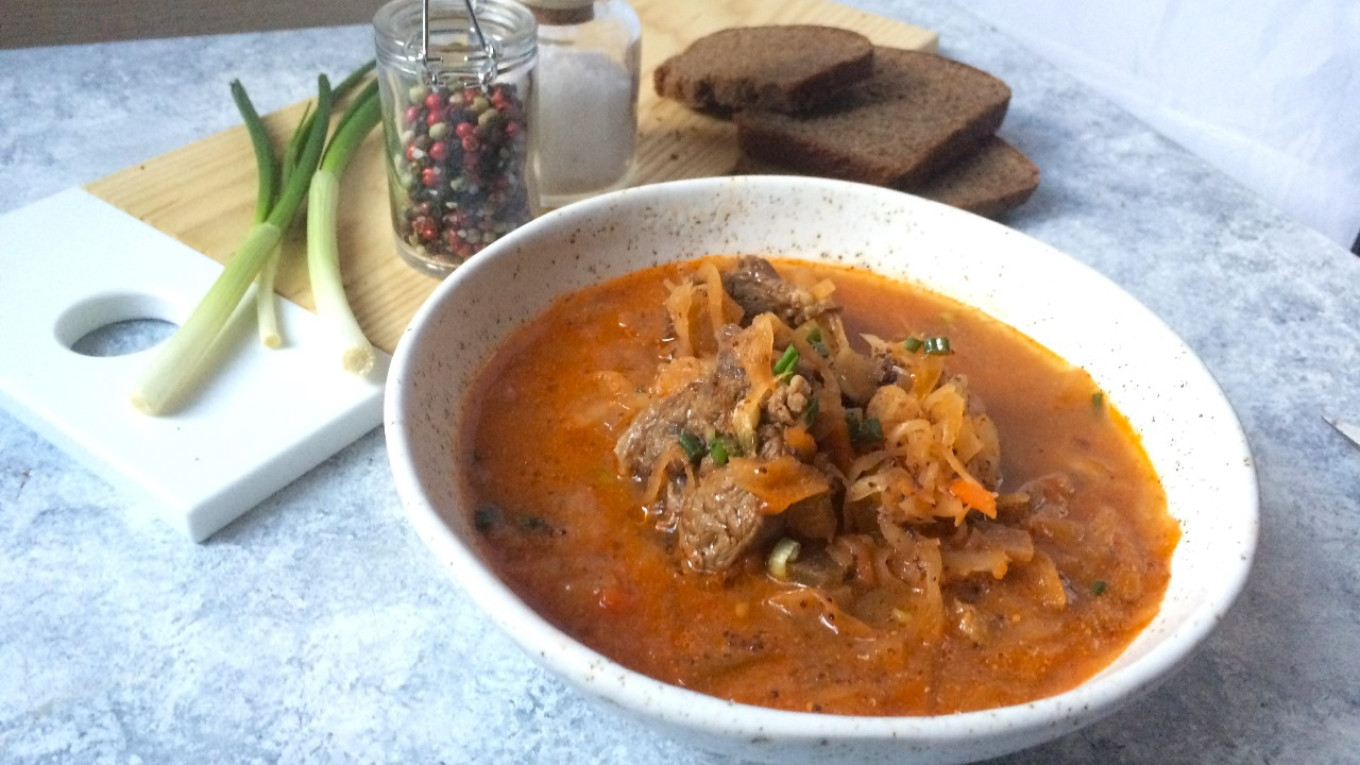
10. Does shchi has a future in the modern kitchen? Certainly! Like other ancient dishes, shchi has a good chance of survival in the modern world. It’s another matter that it must gradually be adapted to the rhythm and lifestyle of contemporary life. Many chefs today are using old recipes and flavors to try to re-imagine shchi. Some of these experiments are certain to be successful and will become a part of 21st century Russian cuisine.
There are many recipes for shchi, and sometimes it seems as if we’ve tried them all over the years. The one we share today has the richest flavor.
Rich Cabbage Soup
Ingredients
For 2.5-3 liters (about 2.7-3.2 quarts) of broth we will need
- 300 g (generous ½ lb) meat, preferably beef brisket
- 100 g (1/4 lb) smoked ham
- 300 g (generous ½ lb) chicken
- 2 medium onions
- 1 stalk of celery
- 3 small potatoes
- 500 g (generous 1 lb) fresh cabbage
- 50 g (1 ¾ oz or 3 ½ Tbsp) butter
- 2 small tomatoes
- Bay leaf, black peppercorns
- Parsley and dill for garnish
Instructions
- Chop the brisket into pieces.
- Cut one onion in half and fry the cut part on a dry skillet.
- Put the meat, chicken and ham, onion and celery in a pot (try a clay one for authenticity); pour in 3 liters (about 3.2 quarts) of water bring to a boil. Skim off the foam, lower the heat and cook for about an hour and a half. Don't forget to taste and salt about 30 minutes before it is done.
- While the broth is simmering, prepare the vegetables. Peel the tomatoes by removing the stem and making a cross cut on the bottom; place in boiling water for about 30 seconds, remove with a slotted spoon and peel under running water. Cut the potatoes into straws, shred the cabbage, chop the onion, and cut the peeled tomatoes into small cubes.
- Gently sauté the cabbage in butter. Sauté the onion in a separate pan until soft, then add the tomatoes and stew for about 5 minutes.
- Remove onions, celery, meat and bones from the broth. Put the broth back on the fire and bring to a boil.
- Add the potatoes to the broth and gently heat. After about 10 minutes add the cabbage, then onions and bay leaf. Salt and pepper to taste. Simmer on low heat. As the vegetable are cooking, cut all the meat and ham into thin straws. When the vegetables are done, add the meat and ham. Turn off the heat, cover and let the shchi rest for about 30 minutes.
- But don’t forget to take out the bay leaves after about 10-15 minutes (if you don’t the shchi will have an unpleasant smell).
- Garnish with dill, parsley and sour cream.
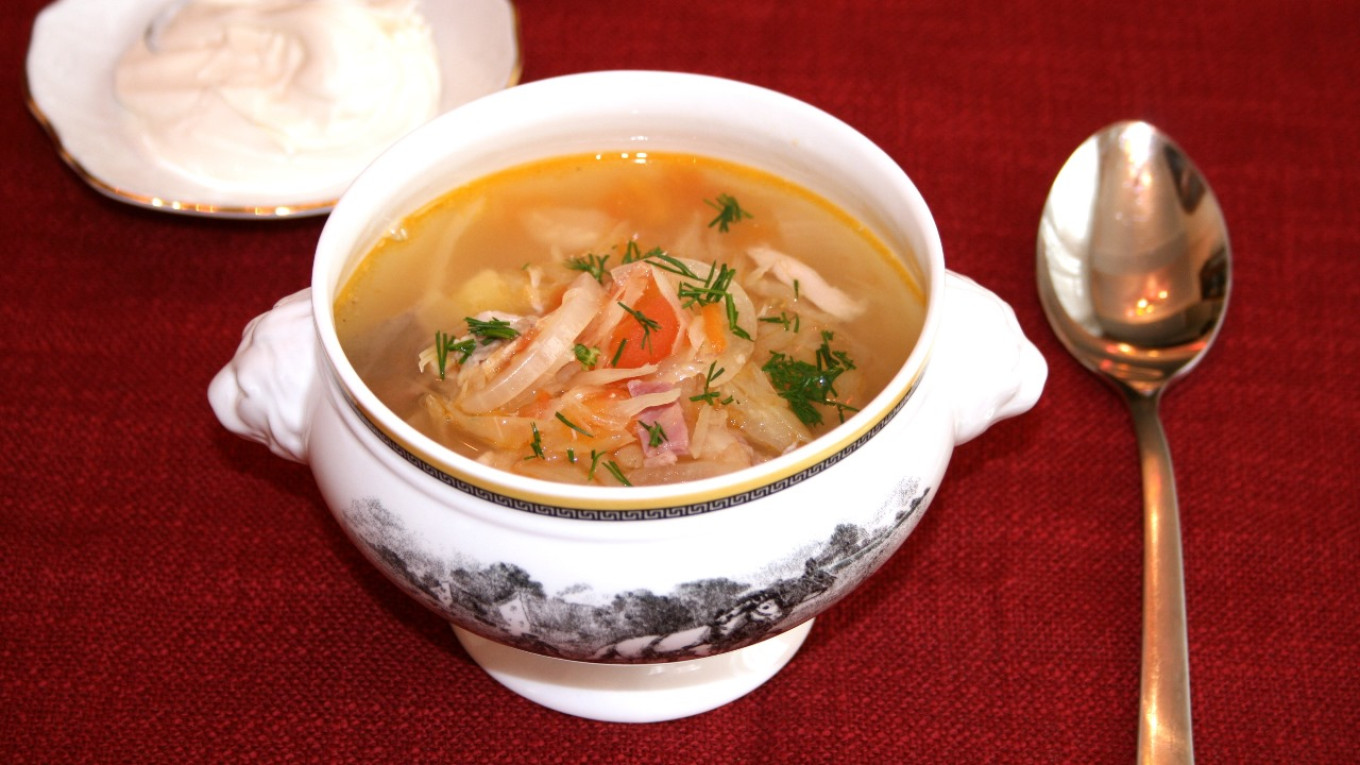
A Message from The Moscow Times:
Dear readers,
We are facing unprecedented challenges. Russia's Prosecutor General's Office has designated The Moscow Times as an "undesirable" organization, criminalizing our work and putting our staff at risk of prosecution. This follows our earlier unjust labeling as a "foreign agent."
These actions are direct attempts to silence independent journalism in Russia. The authorities claim our work "discredits the decisions of the Russian leadership." We see things differently: we strive to provide accurate, unbiased reporting on Russia.
We, the journalists of The Moscow Times, refuse to be silenced. But to continue our work, we need your help.
Your support, no matter how small, makes a world of difference. If you can, please support us monthly starting from just $2. It's quick to set up, and every contribution makes a significant impact.
By supporting The Moscow Times, you're defending open, independent journalism in the face of repression. Thank you for standing with us.
Remind me later.



